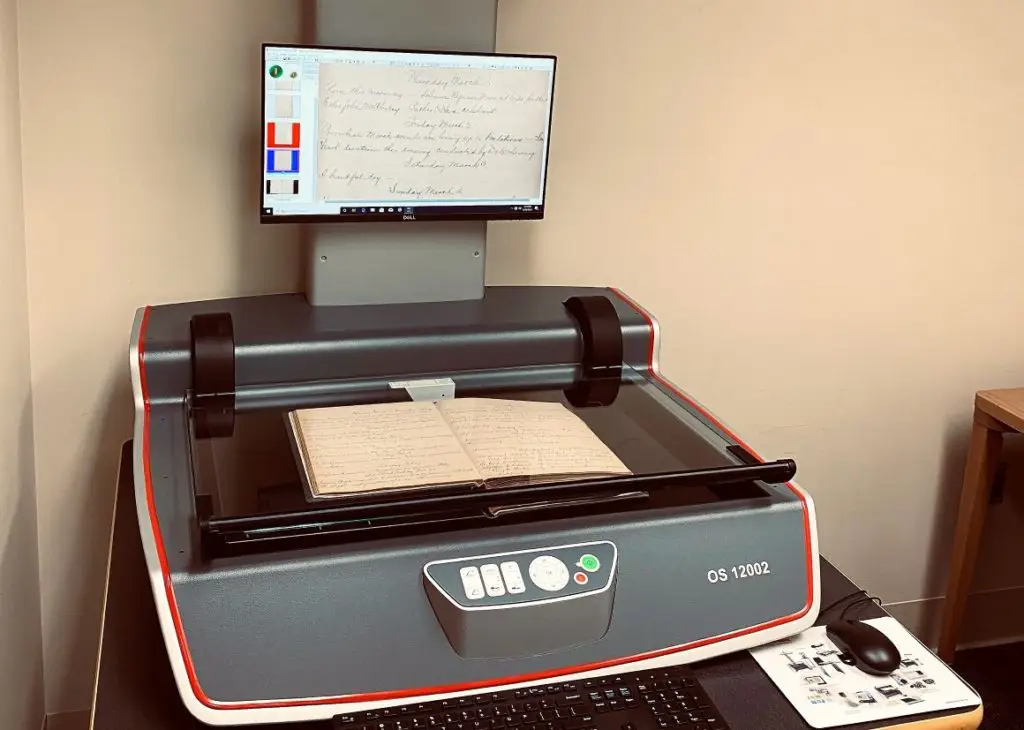Phillips Library Purchases Archival Scanner to Digitize and Preserve Collections
The following press release, authored by Nicole Patterson and featuring the purchase of a new Zeutschel OS12002 Advanced overhead scanner, has been reposted with permission from Mount St. Mary’s University in Emmitsburg, Maryland.
Mount St. Mary’s University’s Hugh J. Phillips Library purchased a Zeutschel OmniScan OS 12002 Advanced Color Scanner that will be used to digitize and preserve historical documents and provide greater access to the Mount’s most important collections. The archival scanner was purchased from The Crowley Company with a grant from Delaplaine Foundation, Inc. and a gift from Sally Dailey, which was matched through her employer, Delta Air Lines, Inc.
“We are ready to make our history more available,” said Director of the Library Jessica J. (Whitmore) Boyer, C’16. “Ever since I was an archivist, I knew it was important that we start to digitize our collections—but we didn’t have an archival grade scanner, something that could handle the caliber of the delicate materials.”
The OS 12002 was developed with insights from experienced archivists. Weighing 154 pounds, it features an overhead tabletop scanner for books, newspapers, posters, memorabilia and large-format documents such as maps. The archival scanner is complete with integrated color management, book curve correction, contrast improvement, image rotation. In addition, the software contains all the standard image processing tools like cropping, masking and removing borders.
“In general, Zeutschel scanners are well-known for their German engineering and superior digital image quality and can be found in libraries and archives around the world, including the U.S. National Archives and the Smithsonian Institution, among others,” said Robert Harris, a senior business development manager with The Crowley Company, who assisted Boyer with the purchase, installed the scanner and trained Boyer and two additional employees on its use.
“This scanner has OCR, so when we scan things, they’ll be searchable.” Boyer added. Optical character recognition, or optical character reader, is the electronic conversion of typed text into machine-encoded text. This makes specific names, dates, locations or keywords easy to find. All historical documents scanned will eventually be available at digitalarchives.msmary.edu.
Currently, the open access Digital Archive Collections includes historic photos, documents and research publications from academic divisions, the Phillips Library and the university’s Rhoads Memorial Archives. Alumni can search yearbooks and descendants of the Elder family, who owned the land prior to university founder the Rev. John DuBois, can read original manuscripts, Boyer said.
Since becoming director, Boyer has increased the number of students in information literacy instruction sessions by 160% and the use of the library’s physical space by 27%. In 2017, she presented a lecture at the Smithsonian Museum of American History during Archives Fair on one of our collections. Additionally, she has developed two original courses: Intro to Archival Science and The History of Mount St. Mary’s. Her case study on the course was published in the Journal of Archival Organization, an international peer-review journal.

